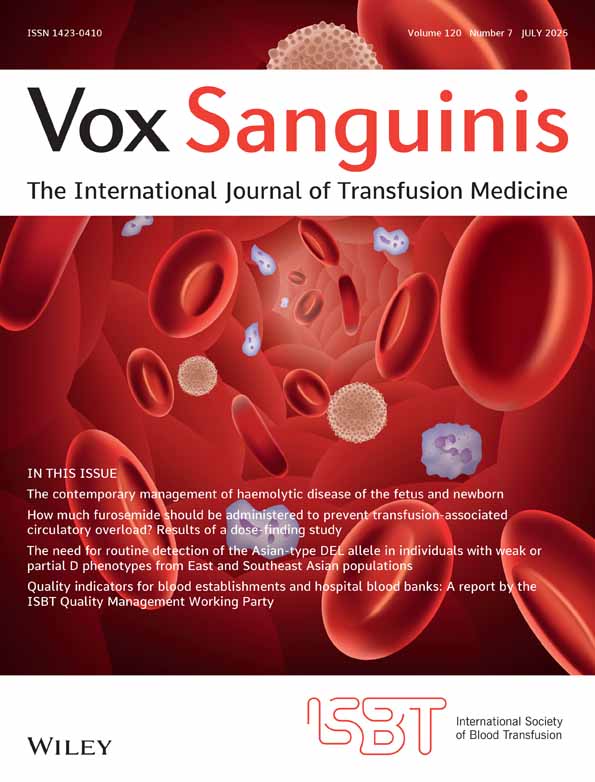Immunologic Studies on the Bea Factor*
Presented (in part) at the International Meeting of Forensic Pathology, Brussels, Belgium, July, 1957.
Abstract
Summary
In a previous report, a new family blood factor, designated as Bea, was reported. It was present in 7 of 11 members of the family, including the husband and three children. The antibody was found in the blood of a woman who was sensitized first by a transfusion of blood from her husband, and subsequently by a pregnancy. Two later pregnancies terminated in stillbirths, which showed the characteristic anatomic changes of hemolytic disease of the newborn. Bea-positive blood was injected into two male volunteers, not members of the family. Both showed a good antibody response. This indicates that the Berrens factor is antigenic in man. The first volunteer produced in addition anti-hr′(c) in a low titer. Be5 was antigenic ally more potent than hr′(c). The immunologic and practical implications of the findings were discussed, and possible future approaches of investigation were outlined.
Résumé
Les auteurs ont décrit, dans une communication antérieure, un nouvel antigène érythrocytaire familial, nommé Bea. Get antigène était présent chez 7 des 11 membres de la famille, y compris le mari et trois enfants. L'anticorps se trouvait dans le sérum de la mère qui avait été immunisée par une transfusion de sang de son man et, plus tard, par une grossesse. Deux grossesses ultérieures résultèrent en des enfants mort-nés, qui préentaient les symptômes anatomiques caractéristiques de la maladie hémolytique du nouveau-né. Du sang Bea positif fut injecté à deux volontaires qui n'étaient pas membres de la famille. Tous deux montrèrent une bonne production d'anticorps. Ces faits démontrent que le facteur Berrens est antigénique chez l'homme. Le premier volontaire produisit en outre de l'anti-hr′ (anti-c) B bas titre. Bea s'avéra donc plus fortement antigénique que hr′ (c). Ces observations sont discutées du point de vue immunologique et pratique, et la ligne que devra suivre l'étude future de ce cas est esquissée.
Zusammenfassung
In einer früheren Arbeit wurde über ein neues Familienantigen, welches als Bea bezeichnet wurde, berichtet. Dieses Antigen konnte bei 7 von 11 Familienangehörigen nachgewiesen werden. Im engeren Familienkreis war es beim Vater und dessen 3 Kindern nachweisbar. Der Antikörper wurde im Blut der Kindsmutter gefunden. Die Isoimmunisierung war bei dieser Frau die Folge einer Transfusion mit Blut des Ehegatten. Anschließend hatte sie eine Bea-inkompatible Schwangerschaft. Zwei weitere Schwangerschaften endeten mit Totgeburten, welche die pathologisch-anatomischen Zeichen eines Morbus haemolyticus neonatorum aufwiesen. Bea-positives Blut wurde zwei männlichen Individuen, die nicht dieser Familie angehörten, eingespritzt. Beide bildeten kräftige Anti-Bea-Antikörper. Der eine dieser beiden Männer bildete außerdem niedertitrige Anti-hr′ (c)-Antikörper. Der Faktor Bea ist offensichtlich ein kräftigeres Antigen als der Rhesusfaktor hr′ (c). Die immunologischen und prak-tischen Konsequenzen dieser Befunde werden besprochen und die Möglichkeiten für künftige Untersuchungen aufgezeigt.




